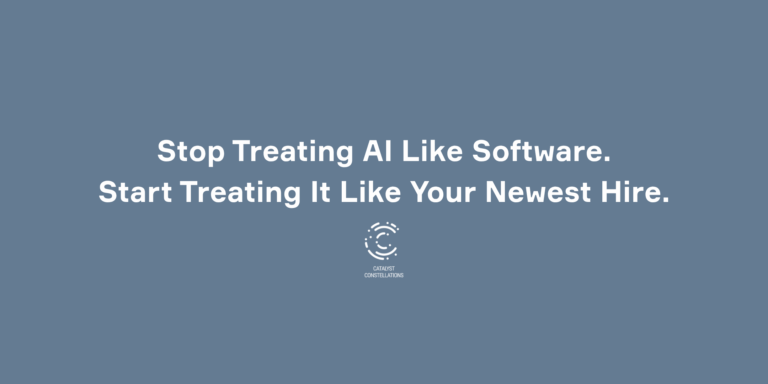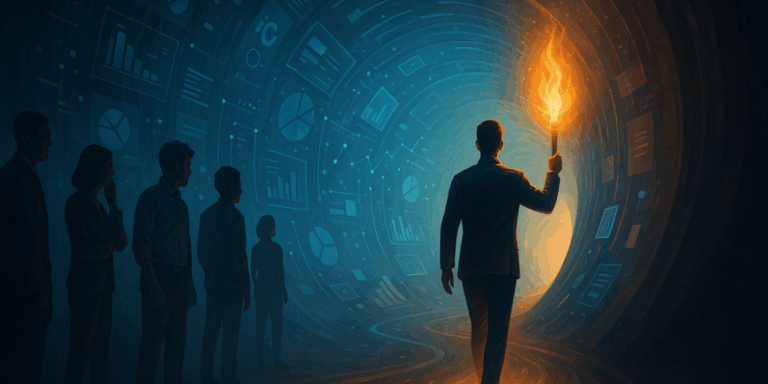The following is adapted from Move Fast. Break Shit. Burn Out, by Shannon Lucas and Tracey Lovejoy.

Catalysts don’t have super strength, though we sometimes try to carry more weight than we should. The truth is much simpler and more extraordinary than all of that: we’re doing the things that every organization values in a changemaker. We’re just doing them faster than anyone is ready for.
We see changes that need to happen, and we don’t hesitate to set them in motion, adapting as quickly as needed in order to reach our objectives. We have a clear vision, a path toward action, and the capacity to iterate as obstacles pop up. When we’re done, we’re ready to move on to the next challenge.
But because we’re moving “faster than a speeding bullet” every step of the way, what we do often looks like magic. To the outside observer, we’re there one minute and gone the next. It takes a concerted effort for anyone to see exactly what we’re doing as we do it — including us. We move on instinct, then keep moving, rarely pausing to acknowledge the remarkable power we have and the superhuman amount of work we’ve been able to accomplish.
And sometimes, we turn around at the end of it all just to see we’ve left chaos in our wake, for everyone involved. We intend to be the hero, but we don’t always pay attention to the impact our heroics have on others.
And, like the quintessential super-speed superhero, we’re often taken down in our blind spots. Maybe our speed gets the best of us and we leave everyone behind, or we forget to watch out for ourselves amidst it all. We’re so busy looking at the dash we’re about to make that we miss the bullet coming right for us.
We’ve identified our powers and tracked our heroic journey. Now it’s time to break down our super strengths, one step at a time. What you see and do in a proverbial flash is what entire teams take years to map out. And the only way to remove the blind spots, protect yourself, and value your strengths is to make your movements visible — first to yourself, then to everyone you’re bringing along with you.
An Inherent Method for Change
Certain models of change are universally true and relatively unchanging. The scientific method, design thinking, action learning, lean startup — at their core, every path toward change shares the same basic structure: Sense the system to create a first vision, take a step toward it, then iterate your next steps based on the results the action created.
- Hypothesize, experiment, analyze.
- Define, ideate, prototype.
- Build, measure, learn.
- Vision, action, iteration.
In each case, action leads to results, which leads to learning, which informs new action. This is the Catalyst Formula: Vision, Action, Iteration. And we believe it’s innate in us.
Within our research, this became evident when Catalysts defined themselves using phrases such as:
- “Catalyzing means being clear on the long-term picture — and I’m willing to fail and experiment to bring it to fruition.”
- “I don’t give up.”
- “I’m happiest when tinkering and experimenting.”
- “I’ve learned how important it is to have a learning mindset and to never become complacent.”
- “I have an idea, but I’m not attached to the specific outcome or how I have to get there.”
Yet, we rarely hear Catalysts describe these traits in ways that organizations appreciate. To be fair, even when we can describe our value, not everyone will be ready to see it. But simply understanding that our innate process is rare and valuable and then learning to articulate it as best we can is a gamechanger. In this context, awareness becomes our most important tool.
Awareness allows us to see our strengths for what they are and apply them with intentionality to whatever we’re manifesting in our lives. Awareness allows us to harness our powers better than we have in the past — it brings unconscious competence into consciousness. Most importantly, it allows us to see our blind spots and begin to work around them.
Whether Catalysts work on something for five minutes or five years, the mechanisms remain the same: it’s a constant, rapid cycling of the Catalyst Formula. The best way to create awareness and improvement of this process is to slow the cycles down long enough to identify what’s happening and to bring a quality of mindfulness to every stage of the process. Fortunately for us and everyone around us, that’s also how we can bring people along more effectively.
For more advice on being a Catalyst, you can find Move Fast. Break Shit. Burn Out. on Amazon.
Shannon has been Executive Vice President at Ericsson, a Senior Innovation Architect at Cisco, and a Director of Innovation at Vodafone. A practitioner and global thought leader on intrapreneurship, she founded the Global Intrapreneur Salon and is passionate about transforming corporations into sustainable change engines. Tracey is an anthropologist and the research engine for Catalyst Constellations. She spent twelve years at Microsoft leading teams of changemakers and co-founded the Ethnographic Praxis in Industry Conference. Tracey thrives when she can use her intuition and relentless optimism to coach Catalysts and amplify their changemaking power.




